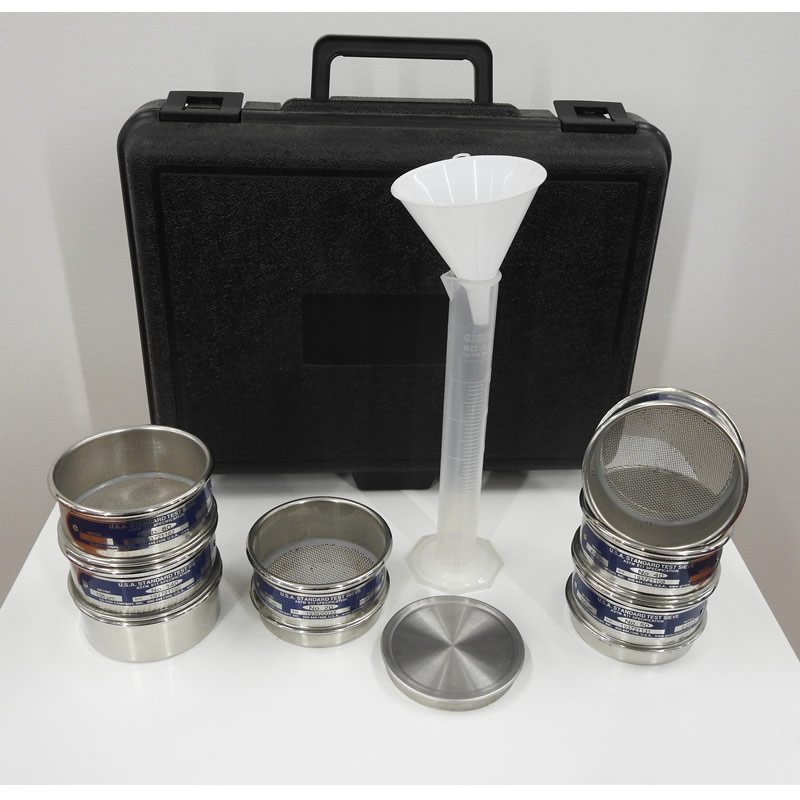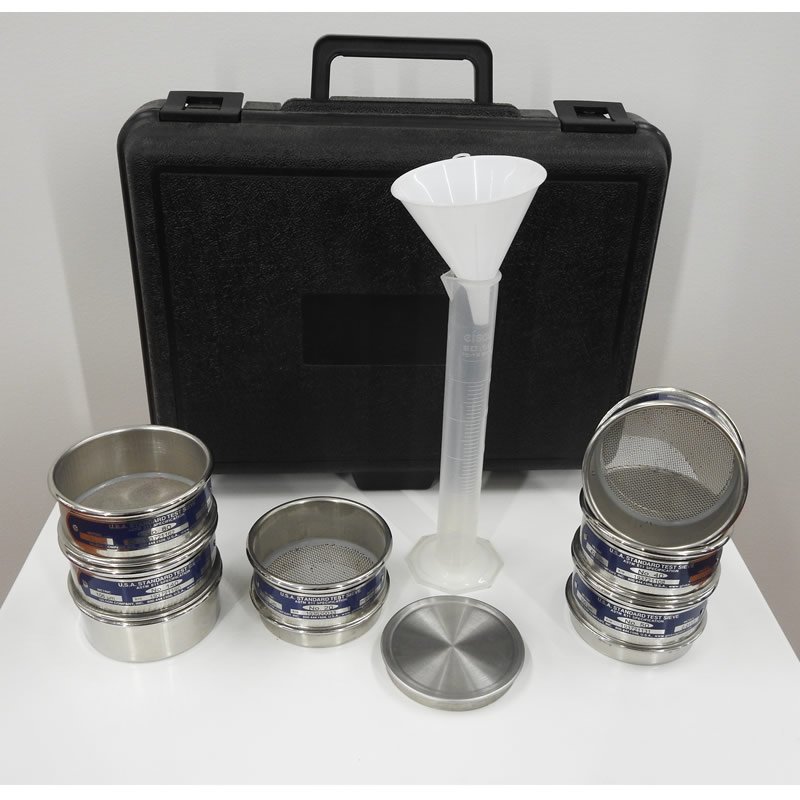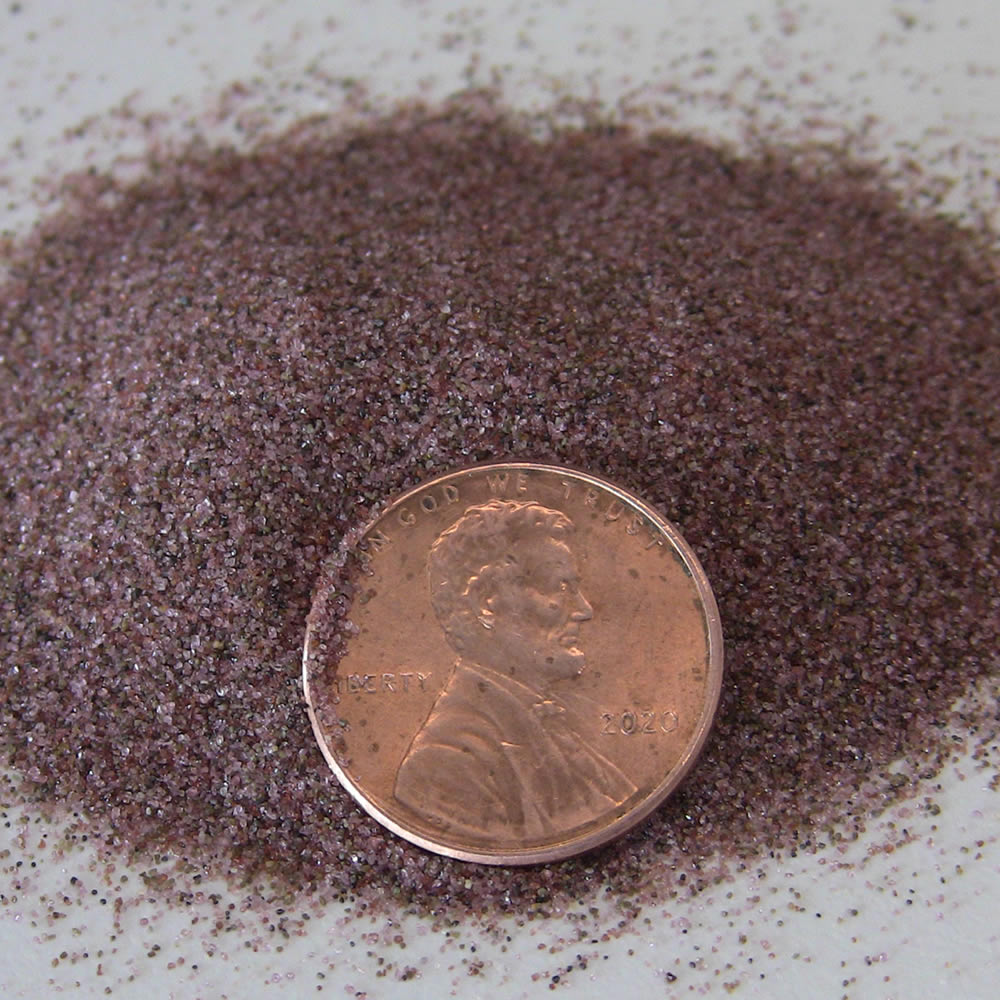MAKING SENSE OF ABRASIVE PARTICLE SIZES
There are two main reasons contractors want to understand the ratio of particle sizes in their abrasive.
- The first is to make sure the abrasive you’re buying will actually do the work you need it to do. Removing thick coatings and impacting the profile requires larger-sized particles, while removing corrosion and cleaning out pits require smaller-sized particles. The needs of your project should dictate the ratio of particle sizes in the abrasive you buy.
- Another reason for testing particle size is to ensure when you’re recycling abrasive that you don’t have dust building up in the reclaimed materials as well as to make certain you’re maintaining a good working blend. Recycled abrasive will get finer and finer with subsequent usage, and so facilities oftentimes purchase bags of pure 36 mesh to top off their reclaimed materials just to fortify the proper ratio of large working particles.
Testing guarantees there are enough fine particles to clean the surface and enough coarser particles to break the coating or corrosion off the surface.
Using a BlastOne abrasive test kit makes the testing process simple and convenient either in your facility or in the field.
It comes with a full set of sieves specifically matched to the abrasive in use. This set is for garnet and other expendable abrasives. It also comes with a graduated cylinder and funnel.
TO CONDUCT THE TEST:
- First, scoop a representative sample of your abrasive mix, making sure it’s well-blended and non-separated.
- Simply fill the graduated cylinder to a precise 50ml; tapping the cylinder to remove any air pockets.
- The test sieves are stacked in a vertical column with each segment filtering for smaller particles as we go down. Pour the abrasive into the column and shake the column for a minimum of 2 minutes to ensure the finer particles make their way down and are accounted for properly. We also suggest some gentle tapping on a hard surface to assist the downward flow.
- You can now separate the individual sieves to measure the accumulated abrasive in each segment and determine the ratios of the mix.
- Using the funnel, empty your top sieve into the cylinder, tap to remove air pockets and then measure the volume.
- Because we tested with 50ml, we can simply convert whatever volume we get into a percentage by doubling it. So XXml out of 50ml equals XX% of the overall abrasive mix.
THINGS TO CONSIDER:
- Particles larger than 30 mesh will cause you to use more abrasive, as well as increasing your profile and paint consumption. So unless you’re needing to remove extremely thick coating or desire a profile around 4mil (100 microns) – 30 mesh and larger should probably be absent from your blend.
- Also, pay careful attention to how much of the abrasive is collected within the 50 mesh and the lower 80mesh sieves. It’s the particles between 50-80mesh that clean out the surface pits. It’s critical you have a lot of particles within that distribution.
- When blasting new steel approximately 75% of your abrasive should fall between the 70-120mesh screens.
- Particles smaller than 80 mesh are important but will have a very difficult time cutting through thicker coatings, and so if their relative percentage is high – it will bring down your productivity.
- Particles smaller than the last 140 mesh sieve will accumulate in the very bottom pan – and this is regarded as unusable dust. And its very important that this should never exceed more than 3-4% when testing recycled abrasive… and no more than trace amounts when testing new abrasive.
HOW OFTEN SHOULD YOU TEST?
New Abrasive – Test every newly delivered batch of abrasive to ensure it’s within specification.
Recycling Environments – We recommend daily inspection for large projects and weekly testing in smaller facilities. If you find high volumes smaller than 80 mesh and particularly in the bottommost dustpan, you may need to adjust your recycler to pull out more fines and dust so as not to dilute the working power of your abrasive mix. This will probably mean an increase in abrasive consumption, but the massive benefit is a reduction in dust and an increase in productivity.
 My Account
My Account





